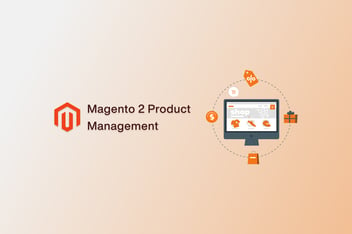Magento 2 is an open-source e-commerce platform that offers merchants a flexible and customizable online store. It is the successor to the original Magento platform and was released in 2015. Magento was acquired by Adobe in August 2018 and became Adobe Commerce.
Adobe Commerce offers a number of features and functions that help merchants create and manage their online stores, including product management, order management, shipping and payment integrations, search engine optimization (SEO), and customer segmentation.
In this blog article, we'll dive deep into the features and benefits of Adobe Commerce and compare it to Magento1.
Introduction to Adobe Commerce Magento
Adobe Commerce Magento is currently the largest open-source e-commerce platform in the world, allowing businesses to create online stores and manage their sales, customer data and inventory in one place. Magento 1 has been around for eight years, and its successor, Magento 2, was released in late 2015, with improvements to vulnerabilities in the earlier version.
There are two editions of Adobe Commerce : Magento Open Source (formerly known as Community Edition) and Magento Commerce (formerly known as Enterprise Edition). Magento Open Source is free to use and offers basic e-commerce functionality, while Magento Commerce is a paid version that offers more advanced features, support, and hosting options.
What are the benefits of using Adobe Commerce?
Some of the features that benefits Adobe Commerce over its competitors include:
- A flexible and scalable platform that can be customized to fit the needs of any business
- Seamless integration with third-party applications and systems
- Ability to create a personalized shopping experience for customers
- Powerful search engine optimization (SEO) tools to help businesses rank higher in search results
- Detailed analytics and reporting tools to track store performance and identify areas for improvement
- Security features to protect businesses and their customers from fraud and data breaches
Features of Magento2
Some of the key features of Magento2 include:
- Advanced search capabilities.
- A responsive design interface.
- Availability of multiple themes and customization options.
- The ability to create and manage multiple stores from a single admin panel.
- Inventory management including advanced tools for single stores as well as multiple warehouses.
- Effective order management.
- Integrated support for multiple payment methods.
- Large no of available plugins to implement several additional features.
- Page Builder, an adobe extension for creating content by dragging-and-dropping pre-built control.
- Extensive Product management capabilities.
- Progressive Web Application (PWA) that can deliver an app-like shopping experience.
- Advanced Customer management options.
- Powerful search engine optimization (SEO) tools.
- Native B2B functions to enhance the buyer experience.
- Headless ecommerce in which the frontend and backend of the store are separated and lets you build personalized customer experiences.
- High performance including improved indexers and varnish caching integration.
- Enhanced tools for catalog management.
- A wide range of shipping and tax options.
- Extensive security features.
Magento 1 VS Magento 2
When it comes to eCommerce platforms, Adobe Commerce Magento is a powerhouse. It’s estimated that Adobe Commerce powers over 30% of all online stores.
Magento1 was released in 2008. Since then, it has undergone several updates and security patches. In 2015, Magento2 was released with a host of new features and improvements.
One of the biggest differences between Magento1 and Magento2 is the structure of the code. In Magento1, the code is organized into a series of folders. In contrast, Magento2 uses a modular structure which makes it easier to customize and extend functionality.
Magento 2 has a more modern and streamlined user interface, with a responsive design that adapts to different devices and screen sizes. It also offers improved checkout and navigation, making the shopping experience more convenient and user-friendly. Perhaps the most notable difference for store owners in Magento2 is its improved checkout process. In particular, it includes a “checkout success page” which provides customers with order information and links to download their products (if applicable).
Overall, Adobe Commerce Magento 2 offers significant improvements and benefits over Magento 1, particularly in terms of performance, user experience, customization, and integration capabilities. As a result, many businesses are migrating from Magento 1 to Magento 2 to take advantage of these benefits.

.png)


